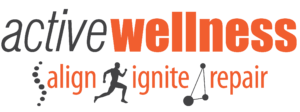Low Back Pain
What is Low Back Pain?
Eighty percent of people suffer from back pain at some point in their lives. Back pain is the second most common reason for visits to the doctor’s office, outnumbered only by upper-respiratory infections. In fact, it is estimated that low back pain affects more than half of the adult population each year and more than 10% of all people experience frequent bouts of low back pain.
The susceptibility of the low back to injury and pain is due to the fact that the low back, like the neck, is a very unstable part of the spine. Unlike the thoracic spine, which is supported and stabilized by the rib cage. This instability allows us to have a great deal of mobility to touch our toes, tie our shoes or pick something up from the ground, but at the cost of increased risk of injury.
As long as it is healthy and functioning correctly, the low back can withstand tremendous forces without injury.
What Causes Low Back Pain?
There are many different conditions that can result in low back pain, including; sprained ligaments, strained muscles, ruptured disks, trigger points and inflamed joints. In addition, conditions such as arthritis, poor posture, obesity, psychological stress and even kidney stones, kidney infections, blood clots, or bone loss can lead to pain.
Some of the most common causes include subluxation, disc herniations, sprains/strains/spasms, and stress.
Subluxations
Whenever there is a disruption in the normal movement or position of the vertebrae, the result is pain and inflammation. Subluxations can lead to debilitating low back pain. Fortunately, subluxations are easily treatable and often times a significant reduction in pain is experienced almost immediately after treatment.
Disc Herniations
A disc herniation is when the shock absorbing disks between the vertebrae shift out of their normal positive. Unfortunately, once a disc herniates, they rarely, if ever, completely heal. Further deterioration can often be avoided through regular chiropractic care, but a complete recovery is much less common.
Sprains, Strains, and Spasms
Overworking the muscles or ligaments of the low back can lead to small tears in the tissues, which then become painful, swollen and tight.
Stress
Whenever you become stressed, your body responds by increasing your blood pressure and heart rate, flooding your body with stress hormones and tightening up your muscles. When you are stressed all the time, the chronic tension causes your muscles to become sore, weak, and loaded with trigger points.
How Can We Help?
Chiropractic treatment for low back pain is usually pretty straightforward. Most commonly, it’s simply a matter of adjusting the lower lumbar vertebrae and pelvis to re-establish normal motion and position of your bones and joints.
Chiropractic for the low back has been repeatedly shown to be the most effective treatment for low back pain. In fact, major studies have shown that chiropractic care is more effective, cheaper, and has better long-term outcomes than any other treatment. This makes sense because chiropractic care is the only method of treatment that serves to re-establish normal vertebral motion and position in the spine. All other treatments, such as muscle relaxants, painkillers and bed rest, only serve to decrease the symptoms of the problem and do not correct the problem itself.
Tips for Low Back Pain Management


